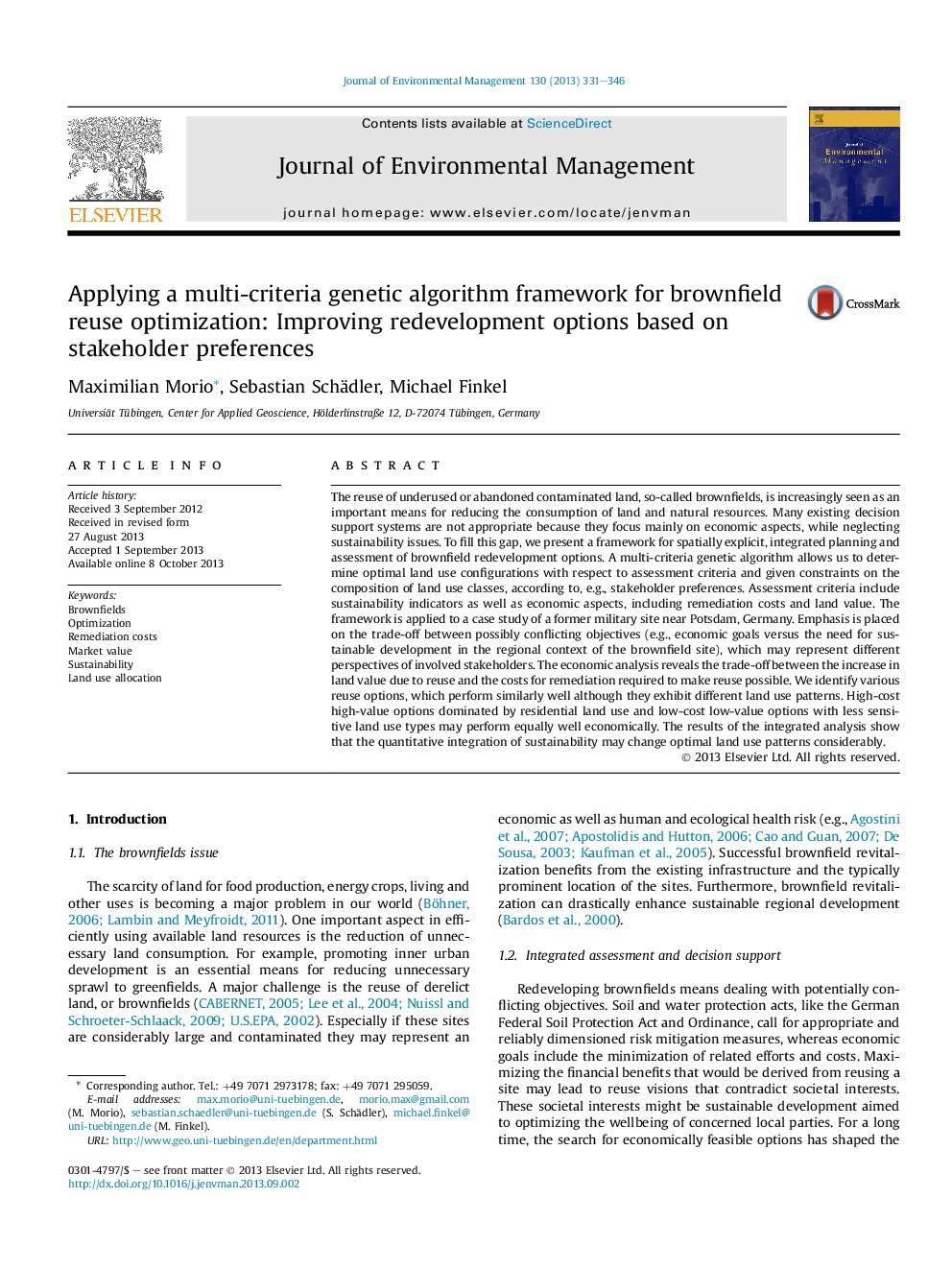| کد مقاله | کد نشریه | سال انتشار | مقاله انگلیسی | نسخه تمام متن |
|---|---|---|---|---|
| 1056102 | 1485282 | 2013 | 16 صفحه PDF | دانلود رایگان |

• An assessment-optimization framework is proposed for improved land-use planning.
• A genetic algorithm supports spatial land-use planning for brownfields redevelopment.
• The algorithm determines sustainable, economically optimal land-use configurations.
• Quantitative integration of sustainability may considerably improve decision-making.
The reuse of underused or abandoned contaminated land, so-called brownfields, is increasingly seen as an important means for reducing the consumption of land and natural resources. Many existing decision support systems are not appropriate because they focus mainly on economic aspects, while neglecting sustainability issues. To fill this gap, we present a framework for spatially explicit, integrated planning and assessment of brownfield redevelopment options. A multi-criteria genetic algorithm allows us to determine optimal land use configurations with respect to assessment criteria and given constraints on the composition of land use classes, according to, e.g., stakeholder preferences. Assessment criteria include sustainability indicators as well as economic aspects, including remediation costs and land value. The framework is applied to a case study of a former military site near Potsdam, Germany. Emphasis is placed on the trade-off between possibly conflicting objectives (e.g., economic goals versus the need for sustainable development in the regional context of the brownfield site), which may represent different perspectives of involved stakeholders. The economic analysis reveals the trade-off between the increase in land value due to reuse and the costs for remediation required to make reuse possible. We identify various reuse options, which perform similarly well although they exhibit different land use patterns. High-cost high-value options dominated by residential land use and low-cost low-value options with less sensitive land use types may perform equally well economically. The results of the integrated analysis show that the quantitative integration of sustainability may change optimal land use patterns considerably.
Journal: Journal of Environmental Management - Volume 130, 30 November 2013, Pages 331–346